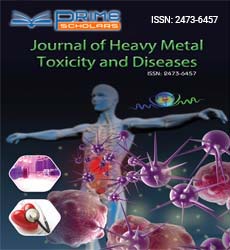Commentary Article - (2023) Volume 8, Issue 6
Transforming Environmental Restoration: Innovative Methods for Cleaning Up Contaminated Sites
Chin Shi*
Department of Environmental Science, Guangzhou University, China
*Correspondence:
Chin Shi,
Department of Environmental Science, Guangzhou University,
China,
Email:
Received: 29-Nov-2023, Manuscript No. ipjhmct-24-18978;
Editor assigned: 01-Dec-2023, Pre QC No. ipjhmct-24-18978 (PQ);
Reviewed: 15-Dec-2023, QC No. ipjhmct-24-18978;
Revised: 20-Dec-2023, Manuscript No. ipjhmct-24-18978 (R);
Published:
27-Dec-2023, DOI: 10.21767/2473-6457.23.6.57
Description
Contaminated sites, whether due to industrial activities, improper
waste disposal, or accidental spills, pose serious threats to
ecosystems and human health. Traditional remediation methods
have limitations, and the urgency of addressing environmental
pollution has spurred the development of innovative cleanup
technologies. This article explores cutting-edge methods that
are revolutionizing the restoration of contaminated sites, offering
hope for a cleaner and healthier future. Bioremediation
harnesses the power of microorganisms to break down or neutralize
contaminants in soil and water. This eco-friendly approach
includes techniques such as bioaugmentation, where specialized
microbes are introduced to enhance degradation capabilities,
and phytoremediation, which uses plants to absorb and accumulate
pollutants. Advances in genetic engineering are enabling
the creation of designer bacteria that can target specific contaminants,
making bioremediation a versatile and targeted solution.
Electrokinetic remediation employs the application of low-level
electric currents to move contaminants through the soil. This
method is particularly effective in treating heavy metal contamination.
The electric field induces the migration of charged ions,
dragging contaminants towards collection electrodes. This innovative
approach minimizes soil disturbance and reduces the
need for extensive excavation. Nanotechnology has opened new
frontiers in environmental cleanup. Nanoremediation involves
the use of nanoparticles to target and transform contaminants at
the molecular level. Zero-valent iron nanoparticles, for instance,
can react with chlorinated solvents, breaking them down into
harmless byproducts. While promising, the potential risks and
ethical considerations associated with the use of nanoparticles
require careful examination. Chemical immobilization involves
the addition of reactive agents to contaminated soil or water
to stabilize or immobilize pollutants. For example, amendments
like calcium oxide or phosphate can react with heavy metals, reducing
their mobility and bioavailability. This method is effective
in preventing the spread of contaminants and minimizing their
impact on surrounding ecosystems. Certain plants, known as
hyperaccumulators, have the remarkable ability to absorb and
accumulate high concentrations of heavy metals from the soil.
Researchers are exploring ways to enhance the natural metal-accumulating
capabilities of these plants. Genetic engineering and
selective breeding are being employed to develop hyperaccumulator
crops that can efficiently extract and store contaminants,
providing a sustainable and aesthetically pleasing remediation
solution. ISCO involves the injection of chemical oxidants into
contaminated groundwater or soil to promote the breakdown
of pollutants. Common oxidants include hydrogen peroxide and
ozone. This method is effective in treating organic contaminants
like petroleum hydrocarbons and chlorinated solvents. ISCO minimizes
the need for excavation and reduces the risk of secondary
contamination. Magnetic nanoparticle technology involves the
use of magnetizable carriers, such as iron nanoparticles, to selectively
remove contaminants from water. Once the nanoparticles
bind to the pollutants, an external magnetic field is applied
to separate them from the water. This method provides a rapid
and efficient means of removing contaminants, especially in water
treatment applications. Mycoremediation utilizes the unique
properties of fungi to break down or absorb contaminants. Certain
fungi, like white rot fungi, have the ability to degrade complex
organic pollutants. They can be employed in both soil and
water remediation projects. Mycoremediation offers a sustainable
and cost-effective solution, with the added benefit of being
applicable in diverse environmental conditions.
Acknowledgement
None.
Conflict Of Interest
The author states there is no conflict of interest.
Citation: Shi C (2023) Transforming Environmental Restoration: Innovative Methods for Cleaning Up Contaminated Sites. J Heavy Met Toxicity Dis. 08:57.
Copyright: © 2023 Shi C. This is an open-access article distributed under the terms of the Creative Commons Attribution License, which permits unrestricted use, distribution, and reproduction in any medium, provided the original author and source are credited.

